Learn about the necessary materials
To start alcohol ink art, preparation is essential. In this guide, we will provide a detailed explanation of the materials needed to begin alcohol ink art.
Alcohol ink art must supply list
・Alcohol ink
・Alcohol
・Dryer
・Dropper
・Synthetic paper
Let’s collect items!
Alcohol ink
This art need alcohol ink!
I will show you what kind of ink we can use.
①Pinata
②Ranger
③Copic Various ink
④Kamenskaya
etc…..
In addition to various other ink brands available, this time, we’ll be highlighting this easily accessible brand and introducing its features.
①Pinata

This is Pinata Alcohol ink
“The notable feature of the ink is its incredibly intense color! Even a single drop provides vibrant coloring, which is a distinctive characteristic. Personally, the primary colors—Magenta Pink, Blue, and Yellow—are outstanding; with these three, you can create a variety of colors, especially beautiful rainbow hues. Additionally, Piñata’s standout recommendation is their metallic series.
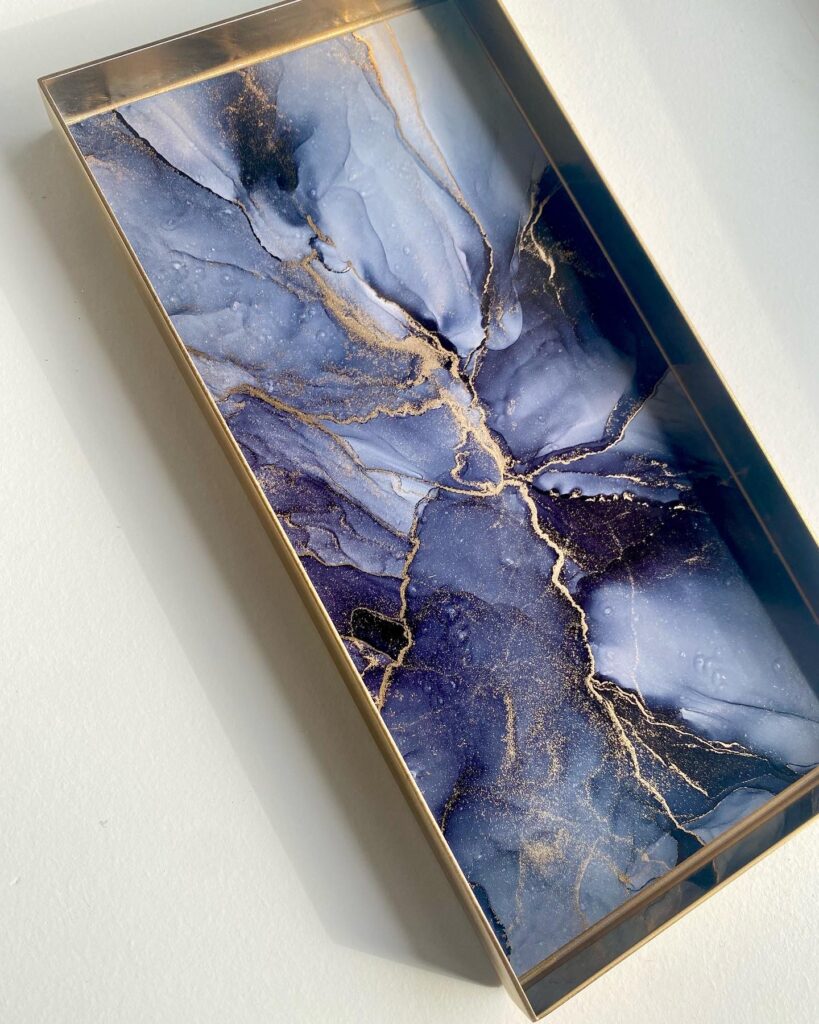
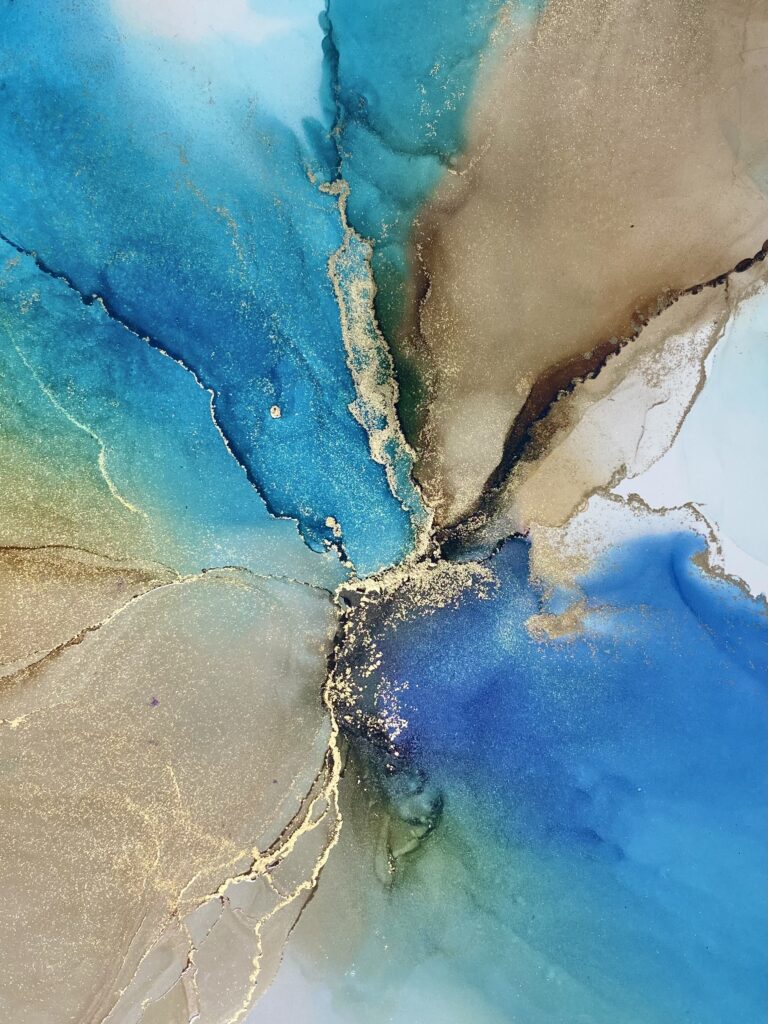
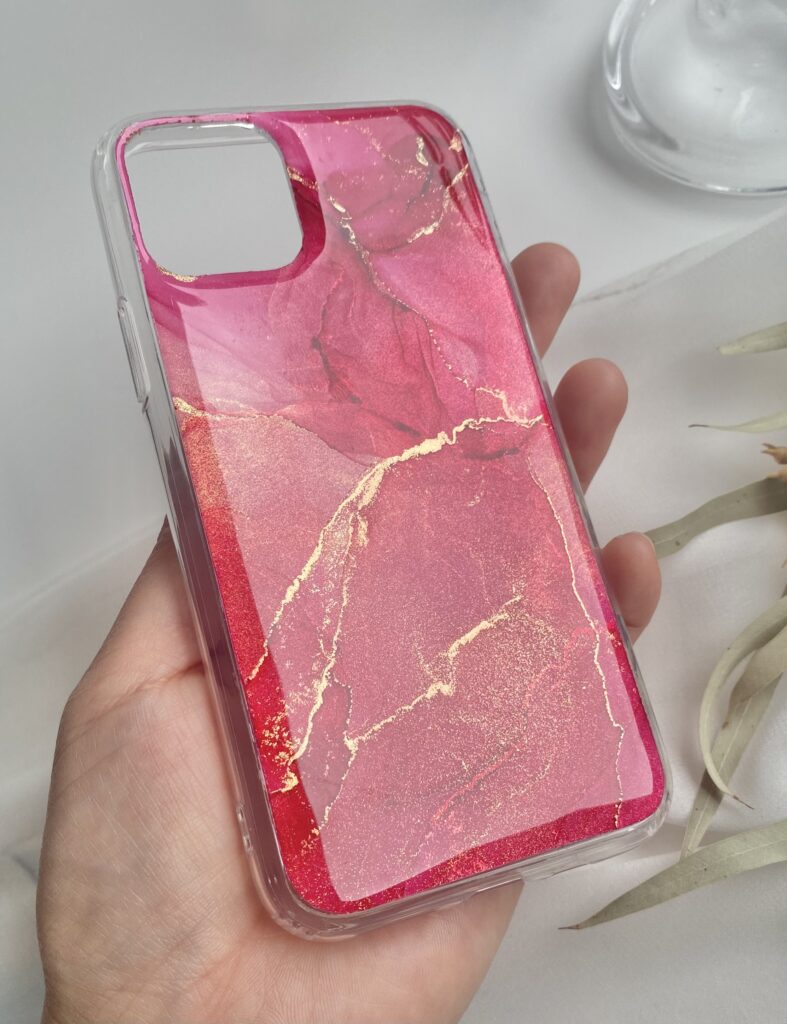
Look at these! The color payoff is splendid, resembling gold powder, isn’t it? This gold ink serves as an accent, broadening the possibilities for your artwork and bringing it to a more sophisticated level!
Some might feel they can’t create art without gold ink, but that’s not the case! You can still produce beautiful art even without gold ink.”
While other brands also offer gold ink, if you specifically want gold ink, “Pinata” is highly recommended!⤵︎
While there are various options for gold ink, the one most Japanese artists use is ‘Brass.’ It has fine and light particles, making it easy to work with and allowing for great movement in your art! ‘Rich Gold’ has a stronger yellow tint and slightly heavier particles compared to Brass. Additionally, there is also a bronze color available!”
Oops!!
For those who love Pinata’s Gold ink, you might surely want to give Silver ink a try. However, it’s important to note that Silver ink is metallic color and doesn’t have the fine particles like Gold ink. It doesn’t sparkle, so you might feel a bit disappointed. I’ll introduce a highly pigmented Silver on another occasion.
②Ranger
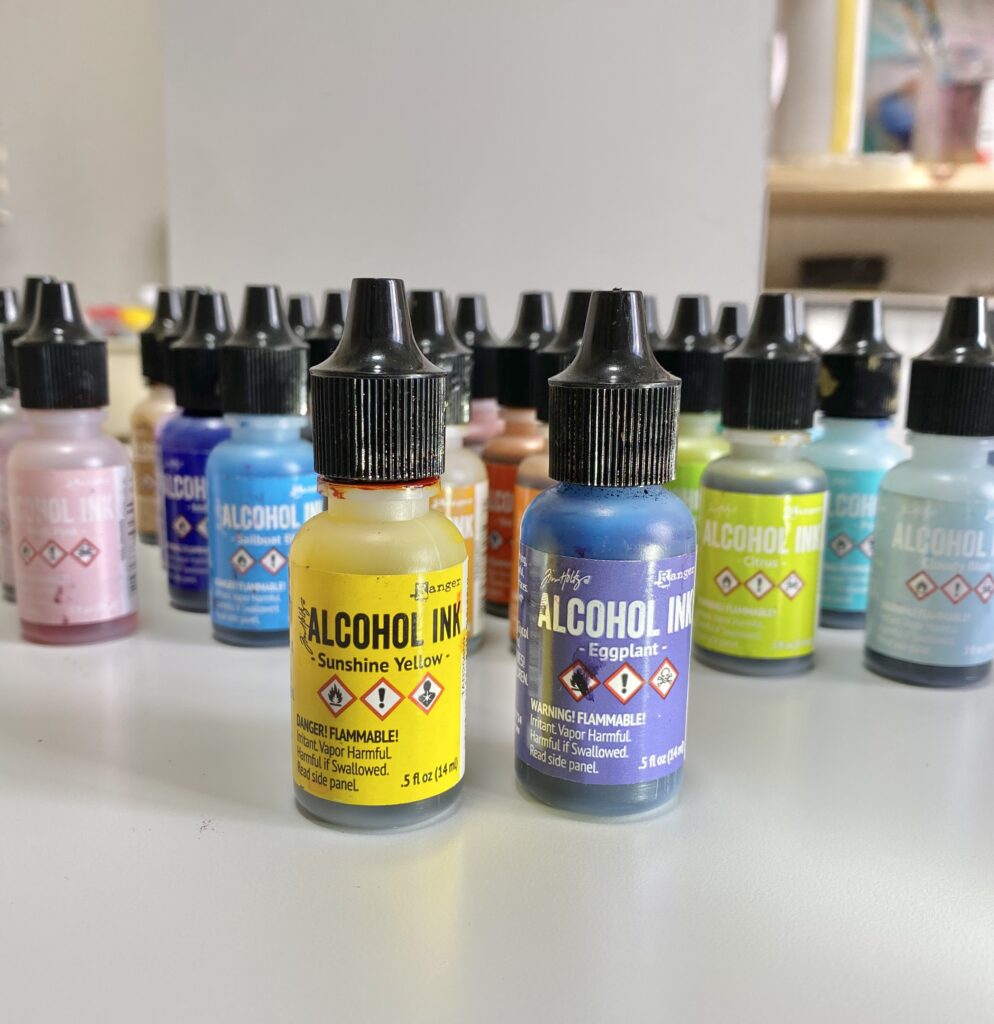
The charm of these inks lies in the variety of colors! Generally, each shade provides a solid and vibrant color. There’s a wide range of options even within the blue spectrum, allowing for enjoyment of various hues. Additionally, Ranger also offers a gold color, but it’s more of a metallic gold than a sparkling gold. While the metallic color shows good pigmentation, it’s quite different from the gold color that most people might be looking for, I think.
③Copic Various ink (Made in Japan)

“When it comes to Copics, the impression is often of artists using them for manga or illustrations. However, in alcohol ink art, we use this refill solution called Various Ink.
(▲I couldn’t find Various Ink easily on Amazon, but I found it here! Horray!)
The usage is exactly the same as other inks – just drop 1 or 2 droplets! The most significant feature of this ink is undoubtedly the wide range of colors. There are a whopping 358 colors available.
Even artists from overseas buy this ink when they come to Japan. Another attractive aspect is that it offers more content than other alcohol inks.
With so many colors available, it can be overwhelming to choose.
I’ll recommend my favorite colors on a separate page.
As a point to note, lighter-colored inks might feel slightly sticky. Even with the same Copic marker, the texture can vary depending on the ink color. From my experience, if you’re unsure which color to buy, try choosing darker colors! When making a purchase, the caps are numbered from 00 〜 forexample 46.
As the number increases, the color gets darker/ deeper, so use it as a reference. Deep colors have good flow and, when extended with alcohol, create a beautiful gradient.
You can enjoy art with just one color, so practicing with a darker shade might be a good idea.
Alcohol
You have to get ….
Isopropyl Alcohol ※Make sure over 90%!!
There are various types of alcohol, but when it comes to alcohol ink art, it is generally recommended to use high-concentration alcohol. Commonly used for art purposes are anhydrous ethanol and isopropyl alcohol with a concentration of 90% or higher. These high-concentration alcohols effectively spread the ink and allow for vibrant coloring. However, since the composition may vary between products, it is essential to check the label and product description before purchasing to ensure it is suitable for art purposes.
Typical disinfectant alcohol has a concentration ranging from about 65% to 80%. When using this type of alcohol for art, the issue is that the ink may not spread well, and instead, black debris-like particles may accumulate. This can truly ruin the artwork. Therefore, for art purposes, it is strongly recommended to use alcohol with a higher concentration.
If you’ve been struggling with your art and things don’t seem to be working out, it’s worth checking the alcohol concentration.
Make sure to ventilate well and have a gas mask ready.

Dryer
Alcohol ink art involves creating patterns while drying the ink using various tools to generate airflow. Here are some tools for creating airflow:
- Hairdryer
- Straw
- Breath
- Airbrush
- Airspray
- Heat gun
- etc.
Art is subjective, and there’s no one right way to do it. However, the choice of tools can significantly impact the final result of your artwork. Let’s discuss one of the most basic tools used by many artists—the hairdryer.
The key is to use a hairdryer that emits a gentle, soft airflow! Additionally, a hairdryer with a narrow tip allows for more concentrated airflow, making it easier to control.
The hairdryer I use is an old-fashioned, simple one with minimal functions. Another type commonly used by many artists is one with the brush part removed from the head.

I’ve gotten used to my regular hairdryer, but this slim and elongated type seems very user-friendly. I’m considering purchasing this slim type when my current hairdryer breaks.

When doing art, if the airflow is too strong, it becomes challenging to dry the ink as intended. It scatters in various directions, making it difficult to control the wind. Additionally, using a hairdryer that only produces high temperatures may cause synthetic paper to warp. Therefore, it’s advisable to choose a hairdryer that allows you to adjust both temperature and speed, as demonstrated here.
And how well you can master the use of the hairdryer (airflow) is a crucial point in this art. It’s more challenging than it looks, so practice is necessary!
Start by experimenting with your regular hairdryer and see how it goes!
Syringe/ Dropper
A syringe is used when dripping alcohol in this art. In this process, you repeatedly drop 2 or 3 drops of ink or alcohol and let it dry. The syringe proves useful for precisely dripping a small amount of alcohol at specific points. I recommend a syringe with a needle because it allows you to dispense one drop at a time. Dripping one drop at a time allows you to create patterns resembling small flowers.

Synthetic paper
Synthetic paper” is also known as Yupo paper, and its main ingredient is polypropylene resin. It is water-resistant, tear-resistant, and made of plastic film. This type of paper is commonly used for outdoor posters, menus, and other applications. Now, for those who are into alcohol ink art, let’s delve into the details of synthetic paper, a material you’ll likely encounter in your creative journey
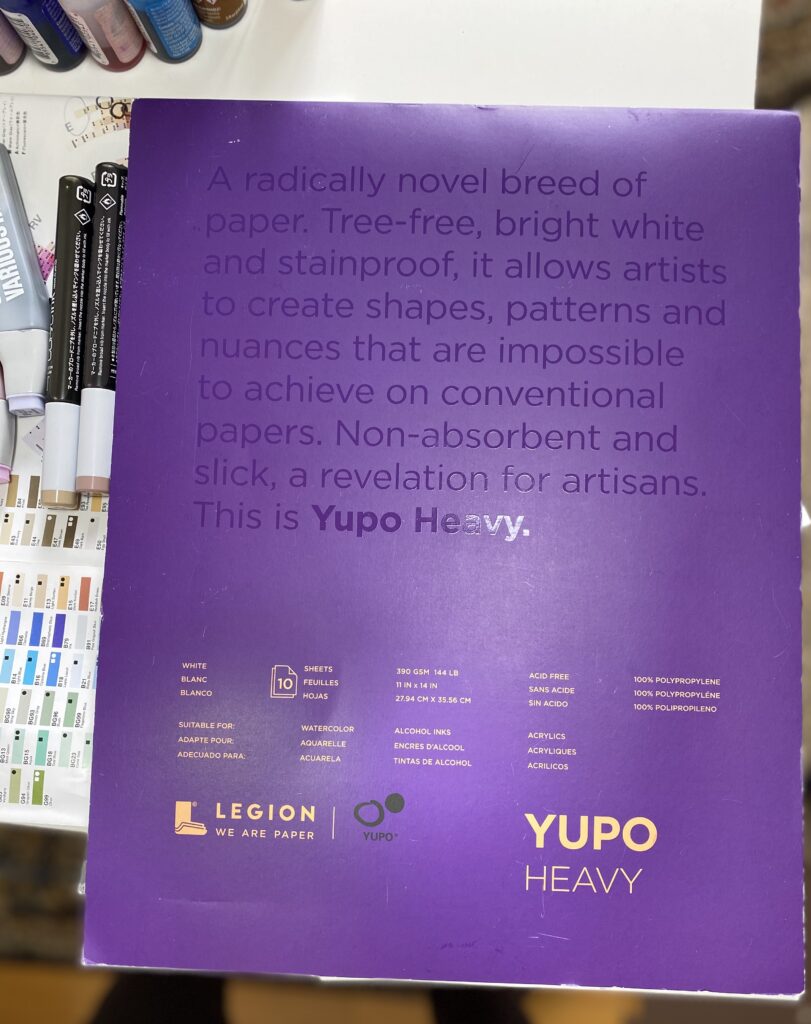
Yupo paper pairs exceptionally well with ink and alcohol, offering a remarkably smooth and glossy texture. The thickness varies across different types of paper.
Describing it in words is a bit challenging, so I strongly encourage you to feel it for yourself. Is it necessary to use Yupo paper for art? Not at all. However, since you can apply art on Yupo paper and then affix it to items like wooden panels or other objects, consider Yupo paper as the primary medium. Beyond that, art can be created on various items, including ceramics and more.
For information on working with other materials, stay tuned for a separate article.
Starting with the description of art tools alone has already become quite extensive.
I began self-learning alcohol ink art, and at that time, there were very few fellow Japanese practitioners, so I struggled with small things quite a bit. One of the reasons for this was the choice of tools. Therefore, I understand how crucial tool selection is.
まとめ
- Use isopropyl alcohol with a concentration of 90.0% or higher.
- For the hairdryer, use one that emits a gentle, mild breeze.
First, pay attention to gathering materials here! Next, let’s talk about preparing for your art.



